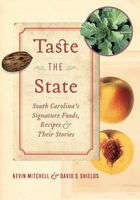Advertisement
Catfish Stew
Appears in
By Kevin Mitchell and David S. Shields
Published 2021
Catfish stew belonged to the repertoire of open-air event dishes, usually cooked in kettles or large Dutch ovens over flames. Along with Pine Bark Stew (a stew of mixed fresh fish that included catfish and bream with tomatoes), Chicken Bog, Brunswick Stew, and Bream Stew, catfish stew became, in the nineteenth century, a fixture at fish fries, barbecues, political rallies, hunt club meets, camp meetings, fund raisers, and club outings.
Every part of the South boasted catfish stew in some guise—some called it “catfish soup,” the name used by Mary Randolph in her

